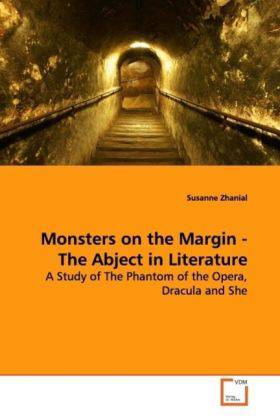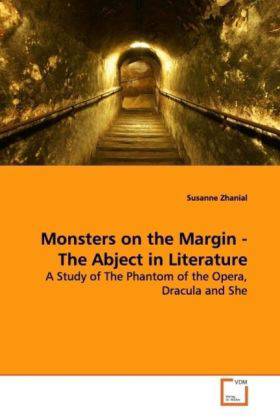
- Afhalen na 1 uur in een winkel met voorraad
- Gratis thuislevering in België vanaf € 30
- Ruim aanbod met 7 miljoen producten
- Afhalen na 1 uur in een winkel met voorraad
- Gratis thuislevering in België vanaf € 30
- Ruim aanbod met 7 miljoen producten
Zoeken
Monsters on the Margin - The Abject in Literature
A Study of The Phantom of the Opera, Dracula and She
Susanne Zhanial
Paperback | Engels
€ 99,95
+ 199 punten
Omschrijving
Monsters are horrifying creatures, yet they also fascinate and attract heroes and readers. How can these contradictory emotions and responses be explained and why do we like monsters although they scare us? In this book, the author Susanne Zhanial uses Julia Kristeva's theory of the abject to answer these questions. The first part of the book introduces the reader to Kristeva's theory of the abject. After defining the terms abject and monster, it will be shown that these two concepts can be successfully linked. In the second part of the book, the theoretical insights will be used for the analysis of three monster stories from the late 19th and early 20th century, namely Henry Rider Haggard's She, Bram Stoker's Dracula and Gaston Leroux's The Phantom of the Opera. By concentrating on a period of approximately 30 years it will be shown that the problems, anxieties and scientific developments of the late Victorian era influenced and determined the character of the monsters. This study is aimed at students and scholars of English literature and Gender Studies.
Specificaties
Betrokkenen
- Auteur(s):
- Uitgeverij:
Inhoud
- Aantal bladzijden:
- 188
- Taal:
- Engels
Eigenschappen
- Productcode (EAN):
- 9783639147988
- Verschijningsdatum:
- 28/04/2009
- Uitvoering:
- Paperback
- Formaat:
- Trade paperback (VS)
- Afmetingen:
- 152 mm x 229 mm
- Gewicht:
- 281 g

Alleen bij Standaard Boekhandel
+ 199 punten op je klantenkaart van Standaard Boekhandel
Beoordelingen
We publiceren alleen reviews die voldoen aan de voorwaarden voor reviews. Bekijk onze voorwaarden voor reviews.








